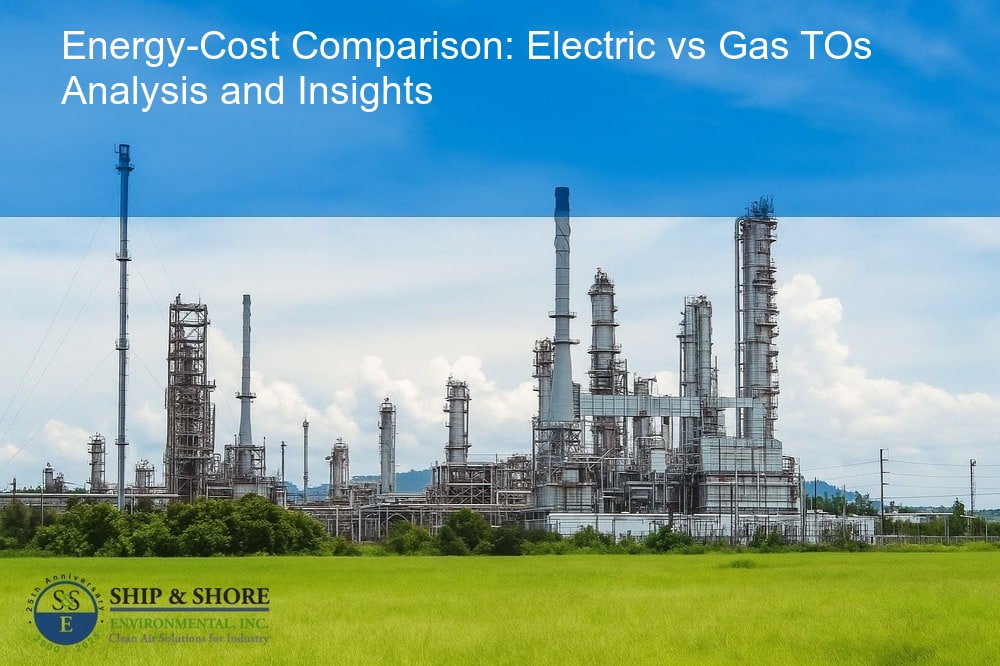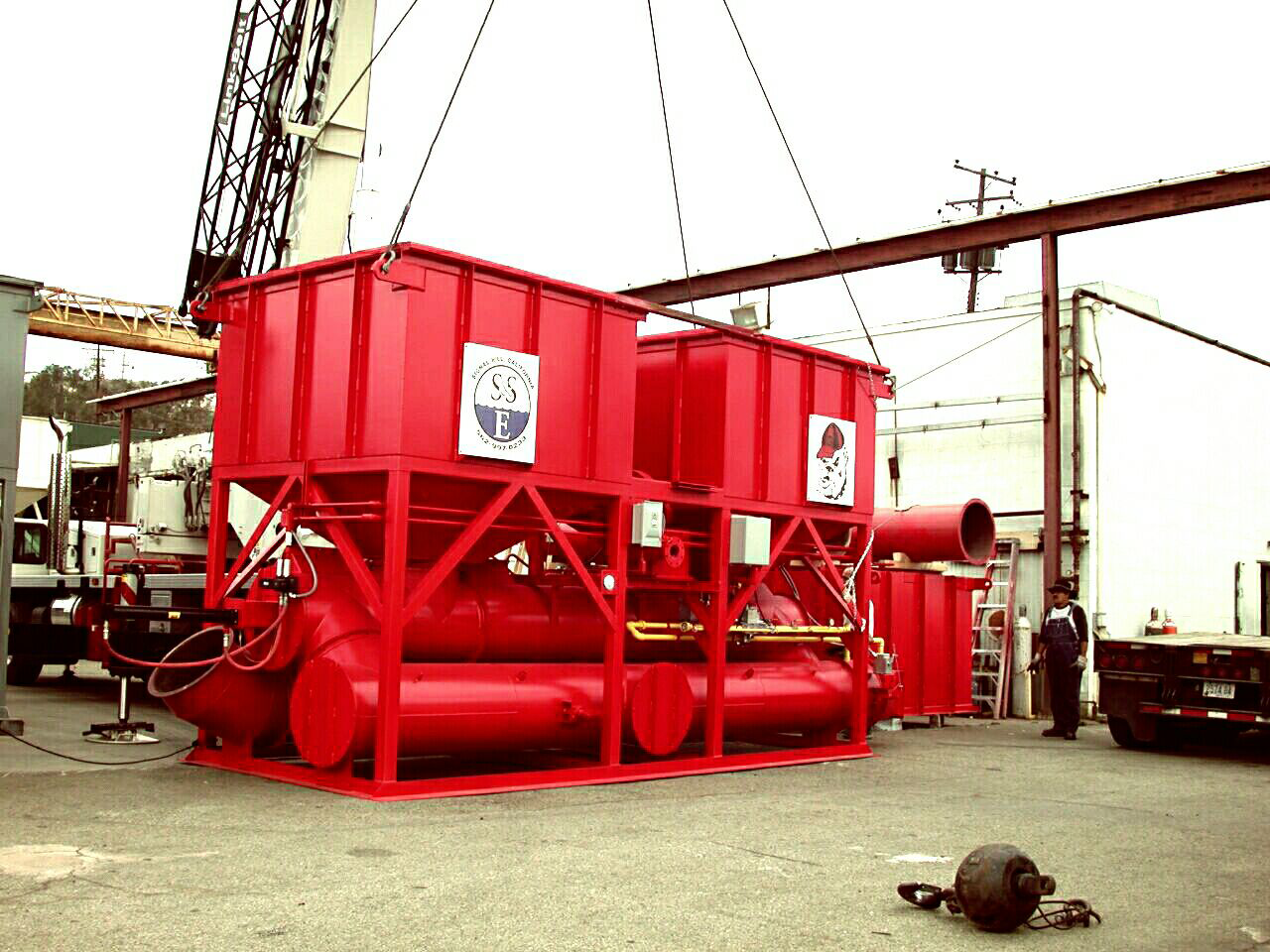
Energy-Cost Comparison: Electric vs Gas TOs Unveiled
July 11, 2025 7:38 amUnderstanding Thermal Oxidizers (TOs): A Brief Overview
Ship & Shore Environmental, Inc. has been at the forefront of providing innovative emission control solutions, and understanding Thermal Oxidizers (TOs) is crucial for industries aiming to reduce air pollution. The fundamental purpose of a TO is to treat exhaust gases from industrial processes by combusting hazardous pollutants, leading to the emission of harmless gases like carbon dioxide and water vapor. One aspect that significantly impacts the selection of TOs is the energy-cost comparison: electric vs gas TOs. This decision can dramatically affect not only operational expenditures but also environmental compliance and efficiency.
The Role of TOs in Industrial Emission Control
TOs play a pivotal role in industrial emission control by ensuring that volatile organic compounds (VOCs) and hazardous air pollutants (HAPs) are effectively managed. Industries such as chemical manufacturing, food processing, and electronics rely on these systems to meet stringent regulatory requirements. At Ship & Shore Environmental, Inc., we recognize that selecting the appropriate type of TO – be it electric or gas – can lead to significant advantages in terms of energy consumption, cost savings, and environmental impact. In today’s competitive market, making an informed choice about TOs can profoundly influence an organization’s operational sustainability.
Deciding Between Electric and Gas TOs: Factors to Consider
When deciding between electric and gas TOs, several key factors must be considered. The initial investment, operational costs, and long-term sustainability are pivotal elements. An electric TO typically offers greater operational efficiency with lower maintenance needs, while a gas TO may offer lower initial costs but higher ongoing energy expenses. The efficiency and reliability of each system depend greatly on the specific industrial application and the existing infrastructure. At Ship & Shore Environmental, Inc., we emphasize a tailored approach to suit the unique needs of each client, ensuring that both the economic and environmental aspects are optimized.
Energy-Cost Analysis: Electric vs Gas TOs
Heating is a critical aspect when it comes to operating Thermal Oxidizers (TOs). The energy-cost comparison: electric vs gas TOs, is vital for making an informed decision. For instance, electric TOs generally have a higher initial cost due to their sophisticated technology. However, they can offer lower operational costs in regions where electricity is reasonably priced or sourced from renewable energy.
Conversely, gas TOs often have lower initial costs. Although they are typically cheaper to install, the fluctuating prices of natural gas can lead to unpredictable operational costs. Additionally, gas TOs may require more maintenance due to the mechanical components involved in gas combustion systems.
Assessing the Operational Efficiency of Electric and Gas TOs
When it comes to operational efficiency, both electric and gas TOs have their distinct advantages. Electric TOs are known for their precise control over temperature, resulting in more consistent performance. They also heat up more quickly, offering better responsiveness to operational demands. Moreover, electric systems eliminate the need for complex gas handling and combustion safety mechanisms, reducing operational complexity.
On the other hand, gas TOs excel in applications requiring higher temperatures. They can achieve and maintain these levels more efficiently due to the high energy density of natural gas. Furthermore, they can be more suitable in areas where natural gas is abundant and inexpensive. By using waste heat recovery systems, gas TOs can also improve overall efficiency.
Environmental Impact: Comparing Emissions from Electric and Gas TOs
Comparing the environmental impact of electric and gas TOs is essential for companies committed to sustainability. Electric TOs are generally cleaner, producing zero direct emissions during operation. This feature makes them an excellent option for facilities aiming to reduce their carbon footprint significantly, especially if the electricity is drawn from renewable sources.
On the contrary, gas TOs do produce emissions, primarily carbon dioxide and nitrogen oxides, which can contribute to air pollution and climate change. Nonetheless, advancements in emission control technologies, such as selective catalytic reduction (SCR) systems, can help minimize these environmental impacts. Additionally, the use of renewable natural gas (RNG) can further lessen the environmental footprint.
- Electric TOs: Zero direct emissions, better if powered by renewable energy.
- Gas TOs: Produce emissions, but can leverage advanced emission control technologies.
Did you know? Thermal oxidizers (TOs) are vital for industrial emission control, but choosing between electric and gas TOs affects both operational costs and environmental impact.
Informed Decision-Making: Key Takeaways from the Energy-Cost Comparison
Our deep dive into the energy-cost comparison of electric vs gas thermal oxidizers (TOs) reveals several compelling insights. It’s clear that while both types of TOs offer unique benefits, the decision ultimately hinges on specific operational needs and environmental considerations. Electric TOs typically boast lower maintenance costs and can be ideal in regions with stringent emission regulations. On the other hand, gas TOs may offer more consistent energy costs, particularly in areas where natural gas prices are stable.
The Future of TOs: Emerging Technologies and Trends
As the landscape of industrial emission control continues to evolve, we are witnessing exciting advancements in the technology underpinning thermal oxidizers. Breakthroughs in materials science and automation are enhancing the efficiency and reliability of both electric and gas TOs. Moreover, the integration of IoT (Internet of Things) and AI (Artificial Intelligence) is enabling smarter control and monitoring systems, which promise to further optimize performance and energy usage. Keeping abreast of these trends is crucial, as they will shape the future of emission control strategies.
Achieving Regulatory Compliance and Efficiency: The Ultimate Goal
Regardless of whether electric or gas TOs are selected, the primary goal remains the same: achieving regulatory compliance while maximizing operational efficiency. We take pride in our ability to tailor air pollution abatement systems to meet the specific needs of our clients, ensuring they remain compliant and efficient. This dual objective is at the heart of our commitment to environmental stewardship and superior service. By staying informed and adaptable, we can continue to deliver solutions that not only meet but exceed regulatory standards and client expectations.
FAQ
What are the main variables that affect the energy costs of electric and gas TOs?
Our analysis of energy costs considers a range of variables, such as the price of electricity and natural gas, local environmental regulations, and the efficiency of the specific TO models. Moreover, energy costs are influenced by the scale of operation and the unique requirements of the industrial processes involved. By assessing these factors in relation to your operational context, we can identify the most cost-effective solution for your needs.
How do electric and gas thermal oxidizers differ in terms of operational efficiency?
Operational efficiency in thermal oxidizers hinges on their ability to treat emissions within the required parameters while minimizing energy consumption. Electric TOs generally require less maintenance and provide precise temperature control, which can translate to higher efficiency for specific applications. Conversely, gas TOs can offer greater fuel efficiency in areas where natural gas is inexpensive and readily available. Ultimately, the measure of efficiency will depend on the balance of these attributes in line with your operation’s demand.
Can the choice between electric and gas TOs impact my facility’s emission compliance?
Absolutely. The choice between electric and gas thermal oxidizers can significantly impact your ability to comply with emission standards. Electric TOs may provide cleaner operation due to the absence of combustion-related emissions, which is particularly advantageous in areas with strict air quality norms. Gas TOs, meanwhile, can produce combustion byproducts that must be managed carefully to ensure compliance. We’re committed to guiding our clients towards the solutions that not only meet, but exceed, these regulatory benchmarks.
What emerging technologies are shaping the future of thermal oxidizers?
The future of thermal oxidizers is being shaped by innovations across various technological fronts. Developments in material science are leading to more durable and heat-resistant designs, while advancements in automation and AI are enhancing system control for greater energy efficiency. Additionally, the incorporation of IoT capabilities is allowing for real-time monitoring and adjustments, ensuring that TOs operate at peak efficiency. It is our mission to stay at the forefront of these trends to provide our clients with state-of-the-art emission control solutions.
How does Ship & Shore Environmental support clients in achieving both regulatory compliance and operational efficiency?
Our approach is twofold: we prioritize compliance with environmental regulations while optimizing operational efficiency. Through a collaborative process, we design and implement air pollution abatement systems that are fine-tuned to the specificities of each client’s operations. Our extensive experience, combined with a commitment to innovation, positions us to devise solutions that ensure our clients operate responsibly and economically. Working in partnership with each client, our goal is to navigate the complexities of regulations and efficiency to achieve the best possible outcomes.
Categorised in: Blog

